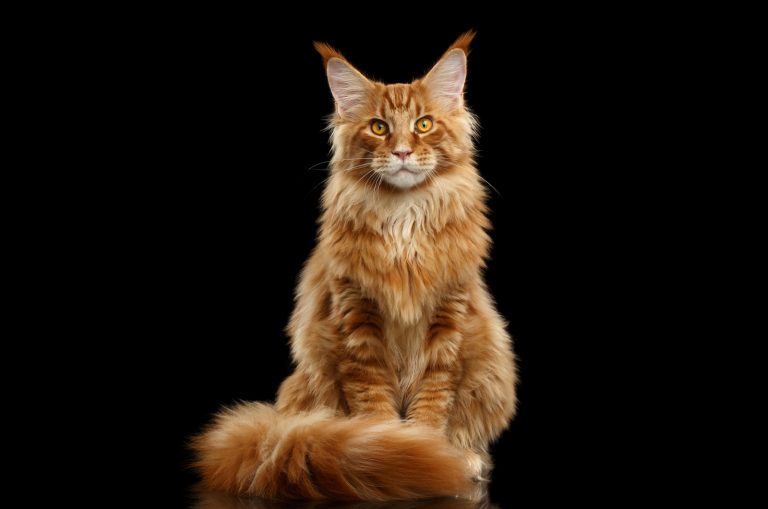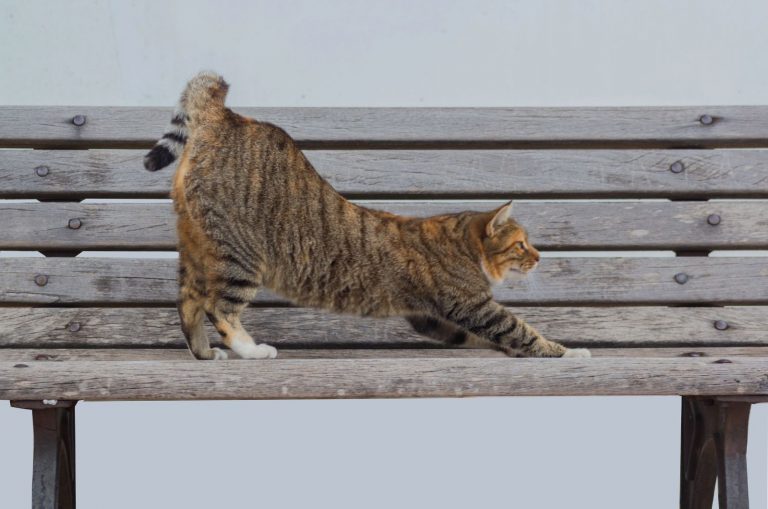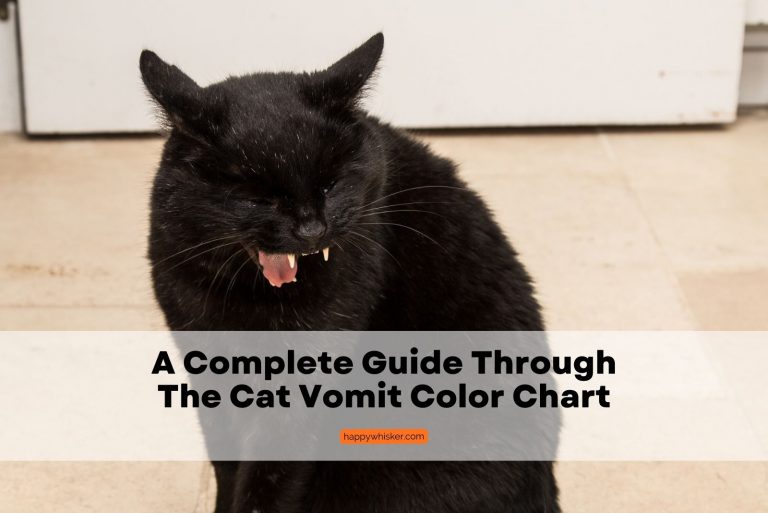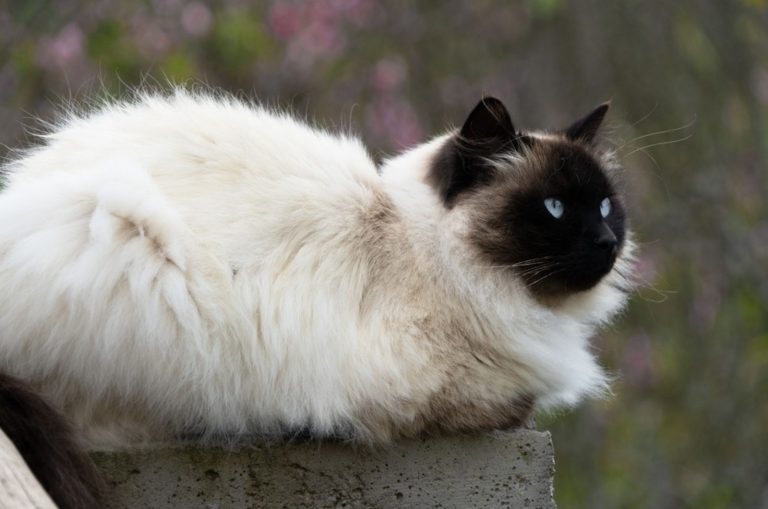Cat Paw Pad Peeling – Causes And Solutions
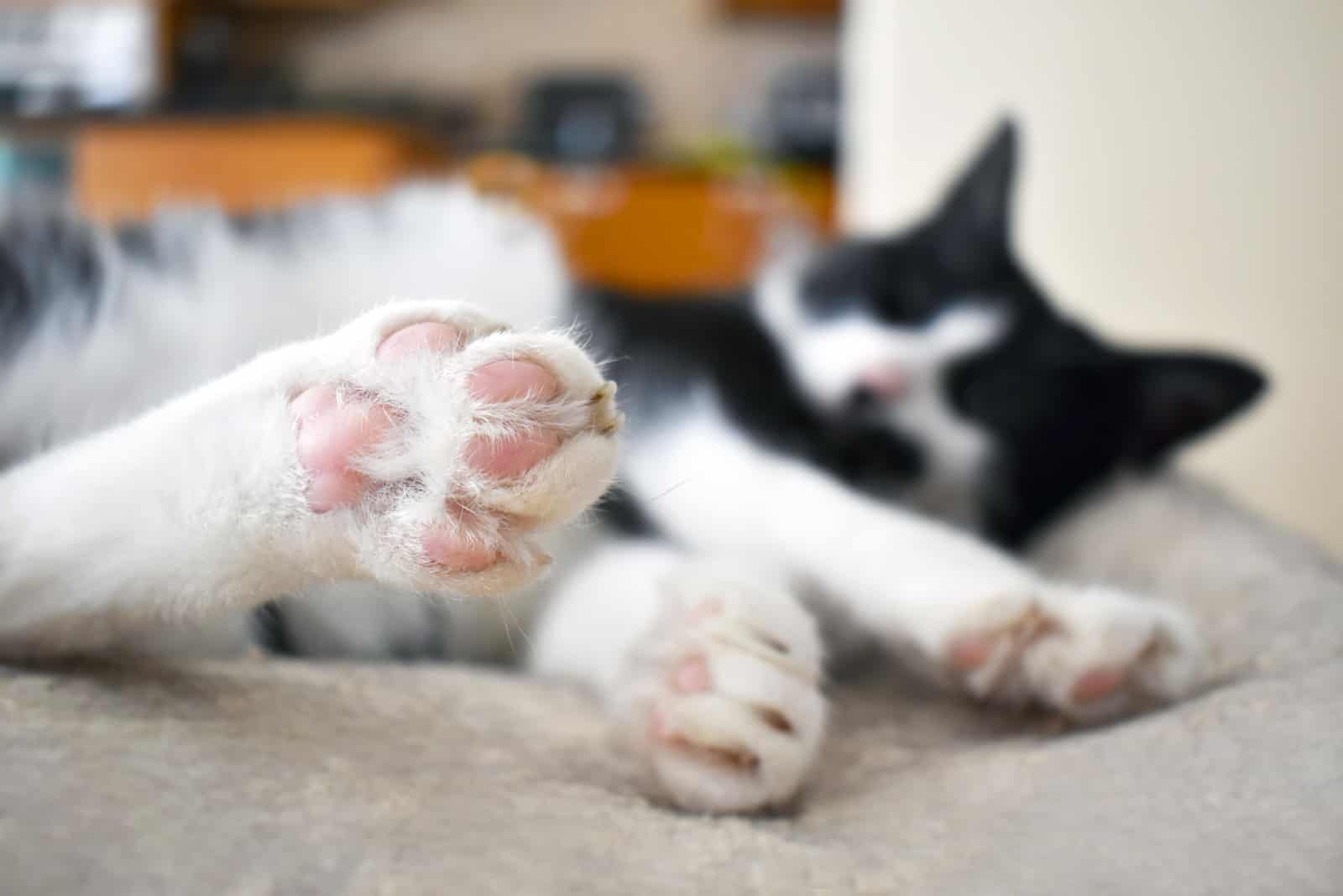
It’s extremely important to take care of cat paw pads. The skin of a cat‘s paw pads is very thin and there are many nerves underneath it, so they are very sensitive.
Taking good care of a cat’s paws is one of the most important aspects of pet care as cat paw pads play a very special role in a cat’s life.
A cat’s pads are textured, and they sweat. This enables them to walk on different surfaces as well as to jump and run easily without slipping.
Cat paw pads are extremely sensitive. This can mean that they are vulnerable to damage that can result in cat paw pad peeling.
It‘s very important to take special care of your cat‘s paw pads in order to prevent certain paw pad issues; even minor problems may lead to further complications.
By moving freely on various types of terrain, cats may injure their paw pads. This is especially true for outdoor cats. Injuries may cause cat paw pad peeling which in turn may lead to other issues if you don’t react quickly and treat the issue.
If you want to know more about what causes cat paw pad peeling and how to take proper care of cat paw pads, read on!
What Causes Cat Paw Pad Peeling?
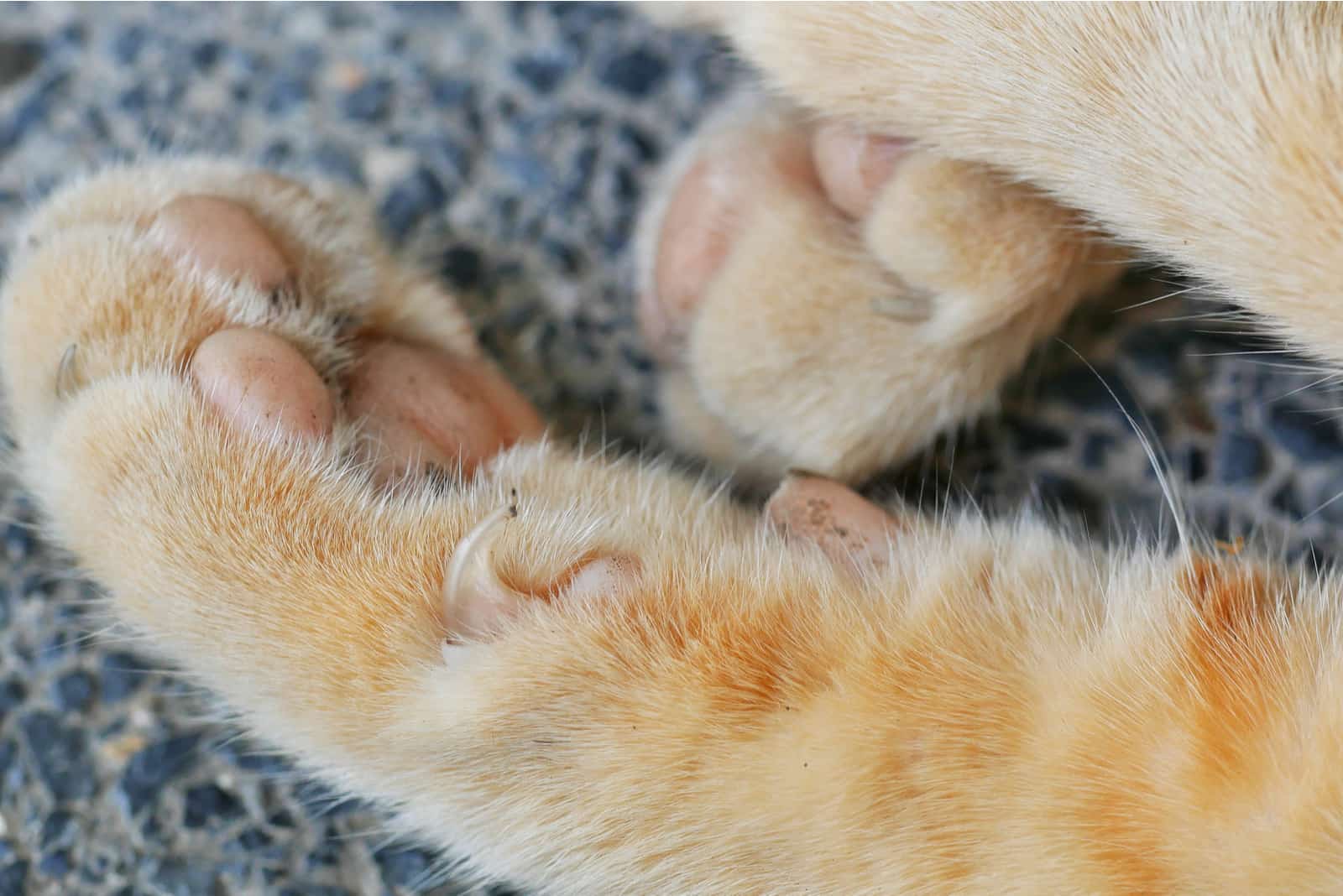
If not monitored, cat’s claws and paws may develop various issues. A cat’s paw pads require special care in order to keep them clean and healthy.
When cat paw pads start to peel, it may be impossible to work out the exact cause of the problem. However, there are certain things that may contribute to cat paw pad feeling.
Let’s look at some of the most common causes for this problem, and how to take proper care of cat paw pads.
Genetics
Some cat breeds are prone to certain health issues; some cats are more likely to experience paw pad peeling than others.
If you notice your cat’s paw pads peeling, make sure you contact your vet and find out if this issue is a common characteristic of your particular cat breed, or if it is more likely to be caused by something else.
The Environment
The type of environment your cat lives in is another factor that may influence the risk of cat paw pads peeling. This cause of paw pad peeling is much more likely to affect outdoor cats than indoor cats.
Cats who spend time outdoors are more likely to experience cat paw pad peeling because of the different terrains where they move; they may walk on rough or rocky terrain, or they may step on a thorn, get bitten, or similar.
Walking around indoors is less likely to cause damage to paws, but while an indoor cat’s paw pad peeling is less likely, it still may occur.
An indoor cat may still be walking on different types of surfaces around the house. Some of them may be dirty (such as a litter box), and they may jump into house plants, etc. They may encounter a sharp object that can cause injury to the paw pad.
The seasons will impact the risk to a cat’s paws too. l. For example, during winter, cats’ paw pads may peel because of the cold weather, especially if they walk on cold surfaces that have salt or other deicing chemicals on them.
This can be very harmful for cats’ paws, and to their general health as they lick substances off their paws when grooming and ingest them.
During summer, cats may hurt their paw pads on hot surfaces, causing the paws to dry out or even become burned, both of which lead to peeling.
Poor Nutrition
Feeding your cat with top-quality, nutritious cat food is of great importance because it delivers the vitamins and minerals your cat needs. On the contrary, a poor diet may affect the health of the cat’s hair follicles.
If the hair follicles are in bad condition due to poor nutrition, this may lead to a follicle infection that may cause the cat’s toe pads to crack and peel.
Therefore, if you want to have a healthy feline friend, make sure that you feed her with top-quality cat food that will provide her with all the necessary nutrition.
It is also essential to keep your cat hydrated, so ensure your cat always has fresh water to drink.
Low Protein Level
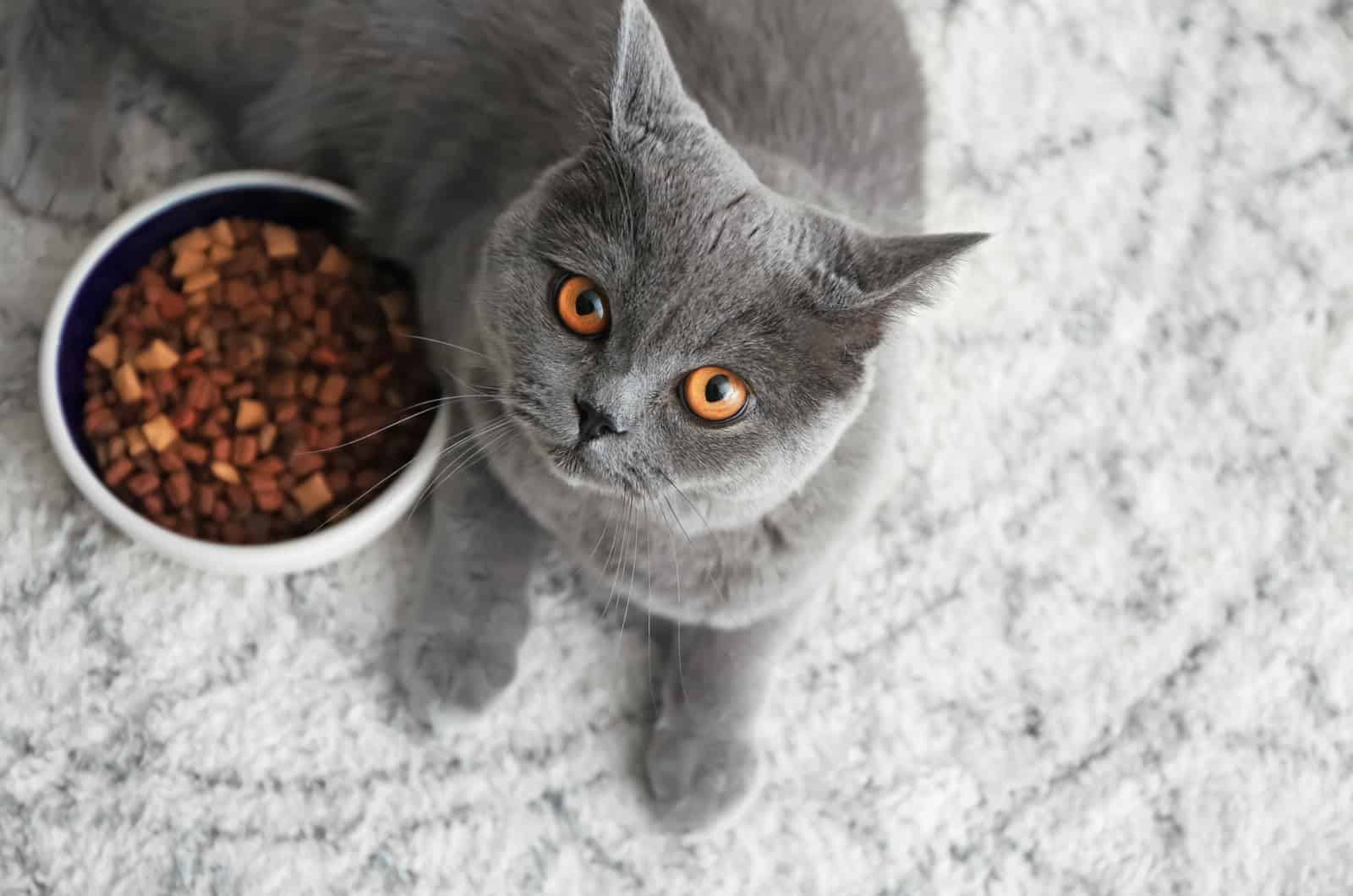
Another reason why you should feed your feline top-quality cat food is to provide her with the necessary amount of protein. A cat’s diet should be mainly made up of meat-based protein. A low protein level may cause your cat’s paw pads to be dry and to peel.
Therefore, a high-protein food is key to proper cat care. A balanced diet is good not only for the cat’s paw pads, but for the cat’s health in general.
Stressful Surrounding
Believe it or not, stressful situations can affect a cat’s health on many levels. It can even cause skin problems, including the peeling of the cat’s paw pads.
If your feline friend is in a stressful environment, it can impact her immune system. When a cat has a weakened immune system, she’s much more prone to developing health issues. Problems with a cat’s claws and the skin on her feet can be related to stress.
A compromised immune system may cause the cat’s nails to crack or her paw pads to peel. If you notice that your cat is stressed in a particular environment or situation, you should provide reassurance and ensure she has a safe place to retreat to so that she feels more secure.
Providing your feline with her own space, and creating a routine that you’ll stick to, is important if you want a happy and satisfied cat.
Over-grooming
Another possible cause of paw pad peeling may be over-grooming. Excessive licking and scratching of the paw pad can damage the skin as your cat may remove too much oil from the paw pads, causing dry skin.
This dry skin usually cracks and eventually leads to peeling. If you notice overgrooming behavior, you should try to stop it immediately by distracting your cat.
Over-grooming may happen due to stress or boredom, but it can also be a result of malnutrition or dehydration so make sure that your cat has access to fresh water all the time, as well as providing high-quality cat food.
Trauma
The peeling of a cat’s paw pads may also be caused by trauma. Outdoor felines are more prone to injury than indoor cats.
A cat’s paw pad peeling may follow an injury to the paw caused by walking on different textured surfaces, jumping around, getting bitten, stepping on sharp objects, or having foreign objects stuck in the paw pad leading to open wounds.
After an injury, a cat’s body releases histamines into the bloodstream. This causes itching, paw pad peeling, and even swelling of the affected area.
If you notice any of these signs, you should try to find the exact cause of the trauma, and take your cat to the vet if necessary.
You can also take care of your cat at home using first aid, if you are confident that it’s nothing too serious, but it’s a good idea to at least consult with your vet.
Medications
There are some specific medications that can cause a cat paw pad to peel. Not every type of medication suits every cat. You should be careful what medications you’re using, especially steroids. Only use medications under the advice of a veterinarian.
Specific medications, such as steroids, may increase the blood flow and this may lead to excessive sweating. Excessive sweating may lead to friction on the cat’s paw pads and subsequently to paw peeling.
If you notice any symptoms after administering medications to your cat, you should contact your vet and inform him about the side effects in order to get tailored advice about how to proceed..
Infections And Other Issues
The paw pad may start to peel off due to bacterial infections. The paws are just one area of the body where illness caused by bacteria can develop.
The most common bacteria that cause these problems are streptococcus pyogenes and staphylococcus aureus. These bacteria cause itching, leading to scratching and peeling of the paw pads. Infection can usually be easily recognized from discoloration of the skin or a swollen paw.
Peeling may also occur due to hard growth of skin on the cat paw pads. Usually, this hard growth isn’t serious for cats, and often it doesn’t affect their everyday life; they can still walk, jump, and hunt etc.
Most of the time, the hard growth falls off by itself. However, there are cases where it doesn’t. If it doesn’t affect the cat’s life, you don’t need to remove it.
If you start noticing your cat limping or suspect that your pet is experiencing discomfort because of the growth, then you should remove the growth carefully with a cat nail clipper, or take her to a vet who will remove it for you.
There are also certain skin conditions that are linked to a cats’ peeling paw pads. Dermatitis is one of the most common skin conditions that cats may suffer from.
Dermatitis develops when the skin’s outer layer becomes too dry or irritated. Dry skin is more prone to cracking, and it is even more sensitive during cold weather. However, if not treated properly, dermatitis can become worse or even lead to other skin problems.
How To Take Care Of Cat Paw Pads?
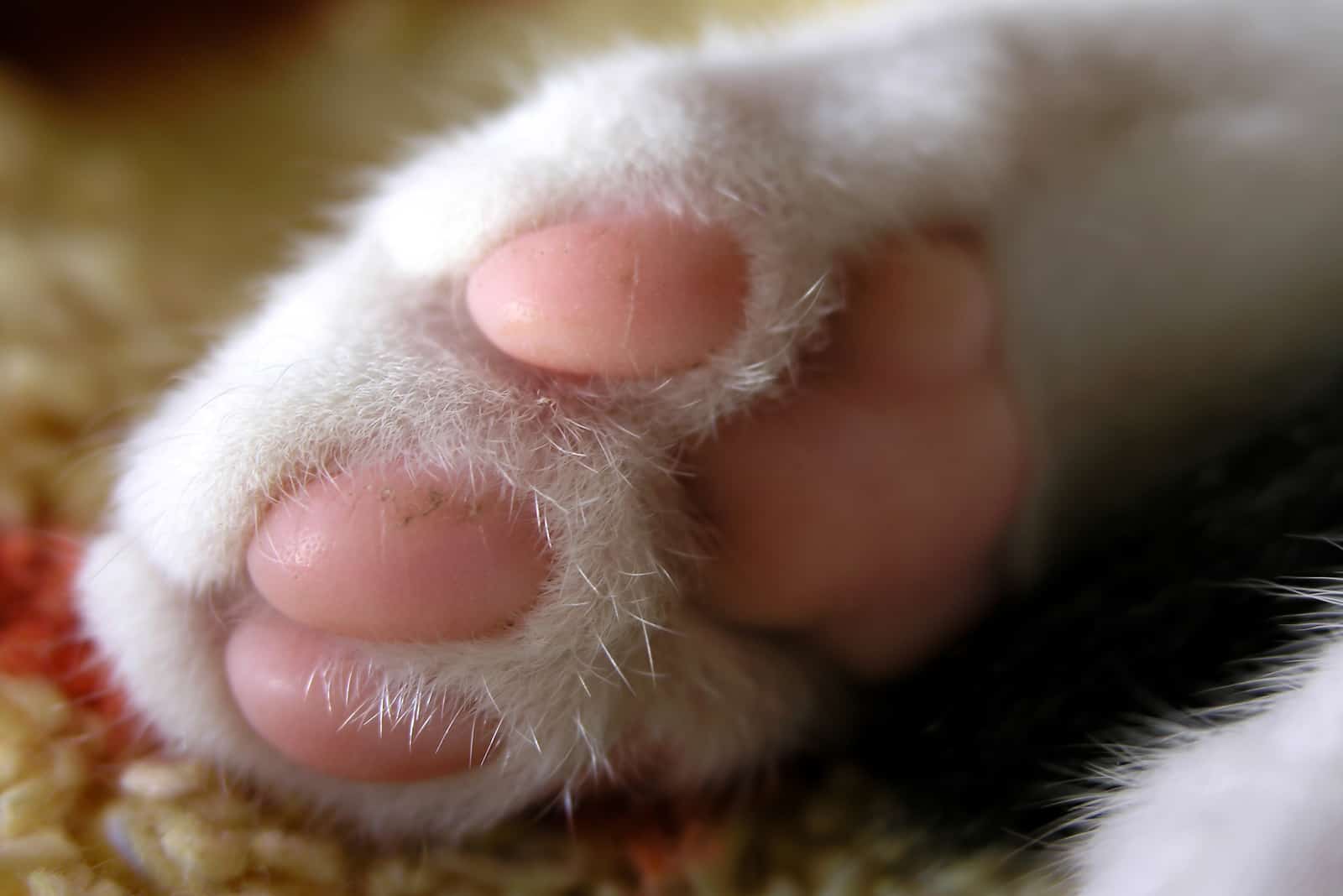
If you want your feline to have healthy paws, then you should know how to take proper care of them. So, read on and find out what you can do to keep your cat’s paws healthy and prevent them from having paw problems!
Hydration
It’s very important that your cat stays hydrated all the time because dehydration may lead to serious health issues, including paw pad issues. So, make sure you provide your feline friend with fresh water.
Natural Treatments
In order to keep your cat’s footpads healthy and clean, there are many natural treatments that can be helpful. So, let’s see what natural products you can use for great paw pad care!
Castor Oil
Castor oil helps keep cat’s paw pads healthy and soft. If using castor oil, make sure you apply it several times a day onto the cat’s paw pads, and massage it gently in the paw pads.
Aloe Vera Gel
Aloe vera gel is a perfect natural treatment that is helpful for many different things. You can use it for wounds, itching, irritation, and similar.
You can use it even for cat’s paw pads if they are having problems such as dry skin or peeling of the paw pad.
Use a cotton ball soaked in aloe vera gel and apply it directly on the affected area on the cat’s paw pad. Leave it overnight and after that rinse it off. Repeat this process once a day if you want better results!
Olive Oil
Olive oil is another natural solution. This healthy oil is helpful for preventing a cat’s paw pad peeling. For this, you should use warm olive oil and massage it gently into the cat’s paw pads. In addition, olive oil may decrease any pain your feline is experiencing.
Apple Cider Vinegar
Apple cider vinegar can be used as a natural treatment for the cat’s paw pads. However, you have to mix apple cider vinegar with water, as it can cause dryness.
Therefore, mix 1/4 of apple cider vinegar with 3 small glasses of hot water. Then, soak a towel in the mixture and apply it on the paw pads. Let it sit for 10 minutes and then rinse it off.
You should repeat this process twice a week until the problem is resolved.
Epsom Salt Bath
Epsom salt baths are good at preventing paw pads from peeling. Dissolve the salt crystals and mix well with warm water in the tub.
Ensure you soak your cat’s paws for 20 minutes and rinse them off afterwards. For even better results, you should repeat this process three times a week.
Vaseline
Vaseline is safe for cats, even if they lick it off, and in addition, it’s very helpful in treating a cat’s paw pad. Use it by simply applying vaseline on the paw pads 3-4 times a week and massaging it in gently.
Tea Tree Oil
This oil is very effective for many things. However, it is strong, so when using it on your cat’s paws, the best advice is to mix it with coconut oil. Then soak a towel in the mixture and place it on the cat’s paw pad. Let it sit for 15 minutes and then wash it off. You can repeat this twice a week. However, your cat may dislike the smell!
Fish Oil
Fish oil is a very good natural treatment that can be used to help your cat manage a range of different issues. You can apply it to the cat’s affected paw and gently massage it.
Cat Booties
Cat booties can be very helpful during seasons with extreme weather, such as during winter or summer. Cat booties will prevent your cat’s paw pads from hurting because of walking on cold surfaces or surfaces with salt and other chemicals that can cause skin problems.
Booties can also protect a cat’s feet from blisters and burns from walking on hot surfaces during summer, or injury from difficult , rocky terrain.
If you don’t like the idea of cat booties, then the only sure solution would be to keep your feline indoors to prevent her from these injuries.
Nail Trimming
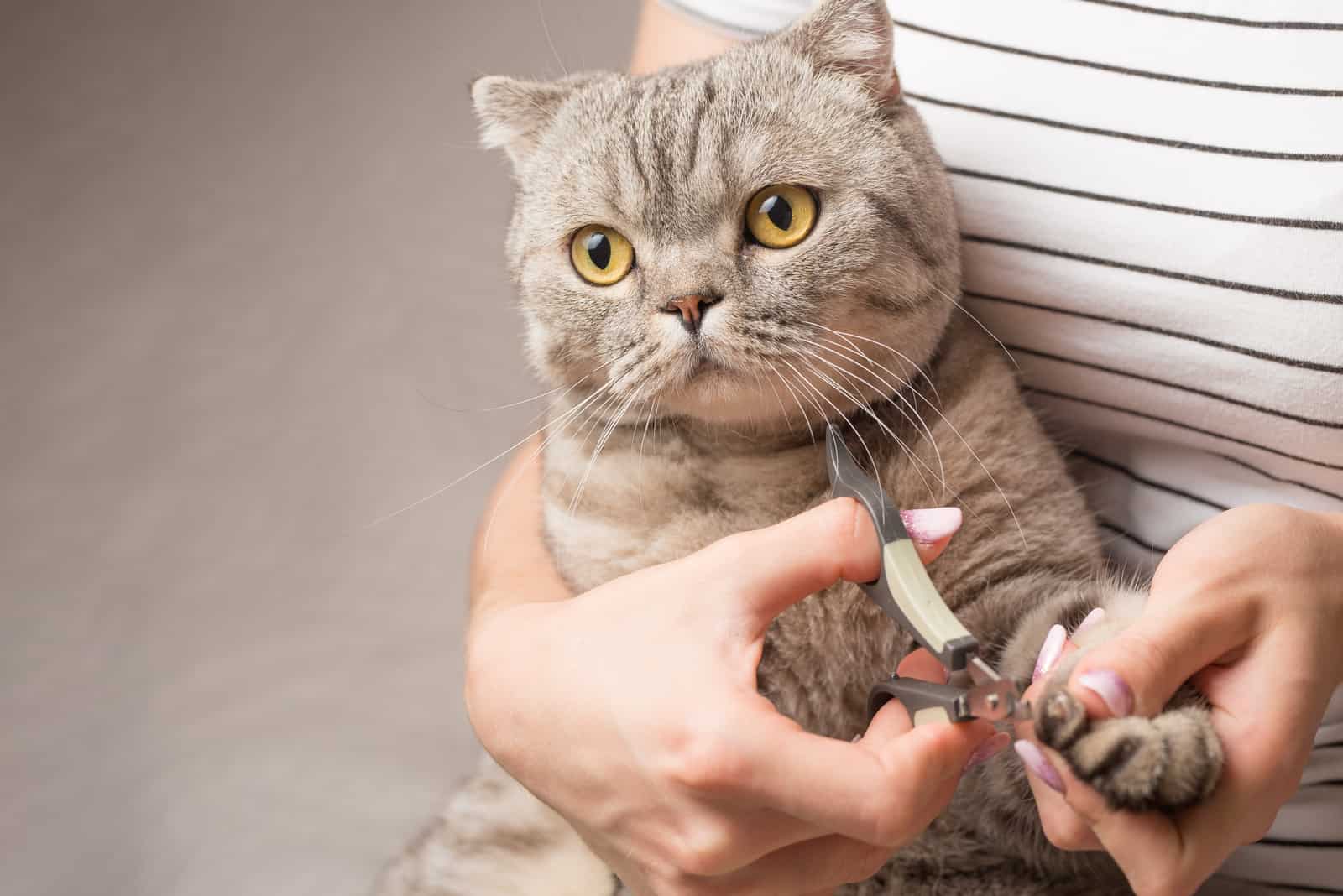
In order for a cat to have healthy paws, you should trim the cat’s nails often. If you don’t do this often, a lot of problems can arise from not trimming a cat’s nails, including cat claw infection.
Use a cat nail clipper to trim your cat’s nails, and don’t forget to trim just the tip of the nail, to prevent hurting your furry friend.
If you have an outdoor cat, there’s usually no need to trim the nails because cats will naturally wear the nails down when moving around in an outdoor environment, running and jumping on different surfaces.
However, indoor cats need help with trimming their nails, regardless of whether they have scratching posts or not.
Supplements
Pet health should be important to every owner. Therefore, you should provide your furry friend with high-quality food, rich in the necessary nutrition that will keep their paw pads healthy and safe from different issues.
Your vet may recommend an additional supplement to help your cat’s dry skin or paw issues if she is particularly prone to this type of problem.
Veterinary Help
If your cat’s paw pads are peeling, and these treatments don’t help, then you should contact your veterinarian, and take your cat for a check up if necessary.
The vet should be able to discover the underlying cause of the issue and he should prescribe you medications, or even antibiotics, that will solve the problem.
You shouldn’t use medications on your own. Always make sure that you only use what is prescribed by the vet.
FAQ
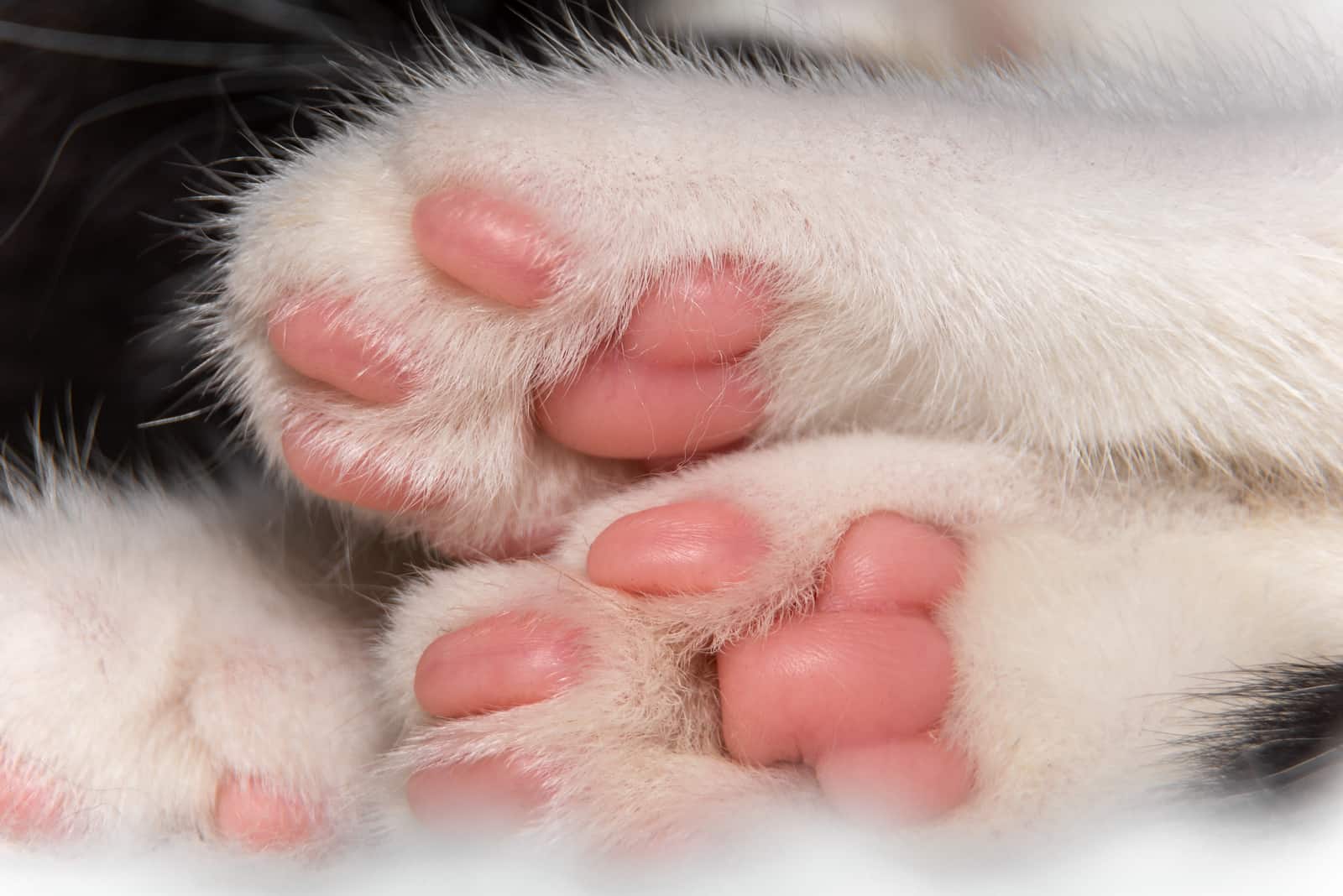
Do Cats Paw Pad Heal?
If a cat’s paw pads aren’t seriously injured, in most cases, they heal themselves in time. If you take proper care of them, you can speed the process up a little.
However, if you notice that the wound isn’t healing or that it is deteriorating further, then you should take your cat to the vet for professional help.
How Long Does It Take For A Cat’s Paw Pad To Heal?
The healing process of a cat’s paw pad depends on how serious the injury is. It may take a bit longer to heal as you cannot prevent a cat from walking. However, in less serious cases, paw pads may heal within a week.
Can I Put Vaseline On My Cat’s Paws?
Yes, you can put vaseline on your cat’s paws as it is completely safe for cats. Moreover, it won’t harm your feline if she licks it off. You can apply vaseline on the cat’s paw pads and massage it gently in order to keep their paws soft and healthy.
How Often Should I Trim My Cat’s Nails?
Outdoor cats usually don’t need to have their nails trimmed, but indoor cats certainly do. It is best to trim your cat’s nails every 2-3 weeks. However, it depends on the individual cat and her activity level.
It is always a good thing to provide your feline with scratching posts to help keep her nails healthy between trims.
What Should I Do If A Cat’s Paw Pad Peels?
If you notice your cat’s paw pad is peeling, first you should check the paw, and clean it with a soft cloth. If you can see any additional injuries you can use first aid to treat it or you can take your cat to the vet. After that, follow the vet’s instructions.
You can use some of the natural treatments we have discussed in order to keep your cat’s paw pads from dryness and peeling.
How Do You Treat A Cat’s Paw Pad Infection?
In order to treat a cat’s paw pad infection properly, first you should clean and disinfect the wound. After that, the best thing to do is to leave it to the professional.
The veterinarian will know what to do. He will clean the affected area, and probably prescribe antibiotics and additional supplements for a cat to use during the recovery process.
What Can I Do To Make My Cat’s Paw Pads Heal Faster?
In order to help your cat’s paw pads heal faster you should clean and disinfect the affected area daily.
After that, you can use natural treatments such as oils, vaseline, and moisturizers in order to keep the cat’s paw pads from dryness.Keep the skin of the paws hydrated is key. If hydrated properly, their paw pads won’t crack anymore and this may hasten the healing process.
Alternatively, you can use cat booties to protect the cat’s paws from hot or cold surfaces outside, or you can keep them indoors to prevent them from injuries.
Most importantly, if you want the cat’s paw pads to heal faster, you should provide your cat with plenty of fresh water and feed her top-quality cat food in order to ensure she receives the necessary nutrients to keep her healthy.
Final Thoughts
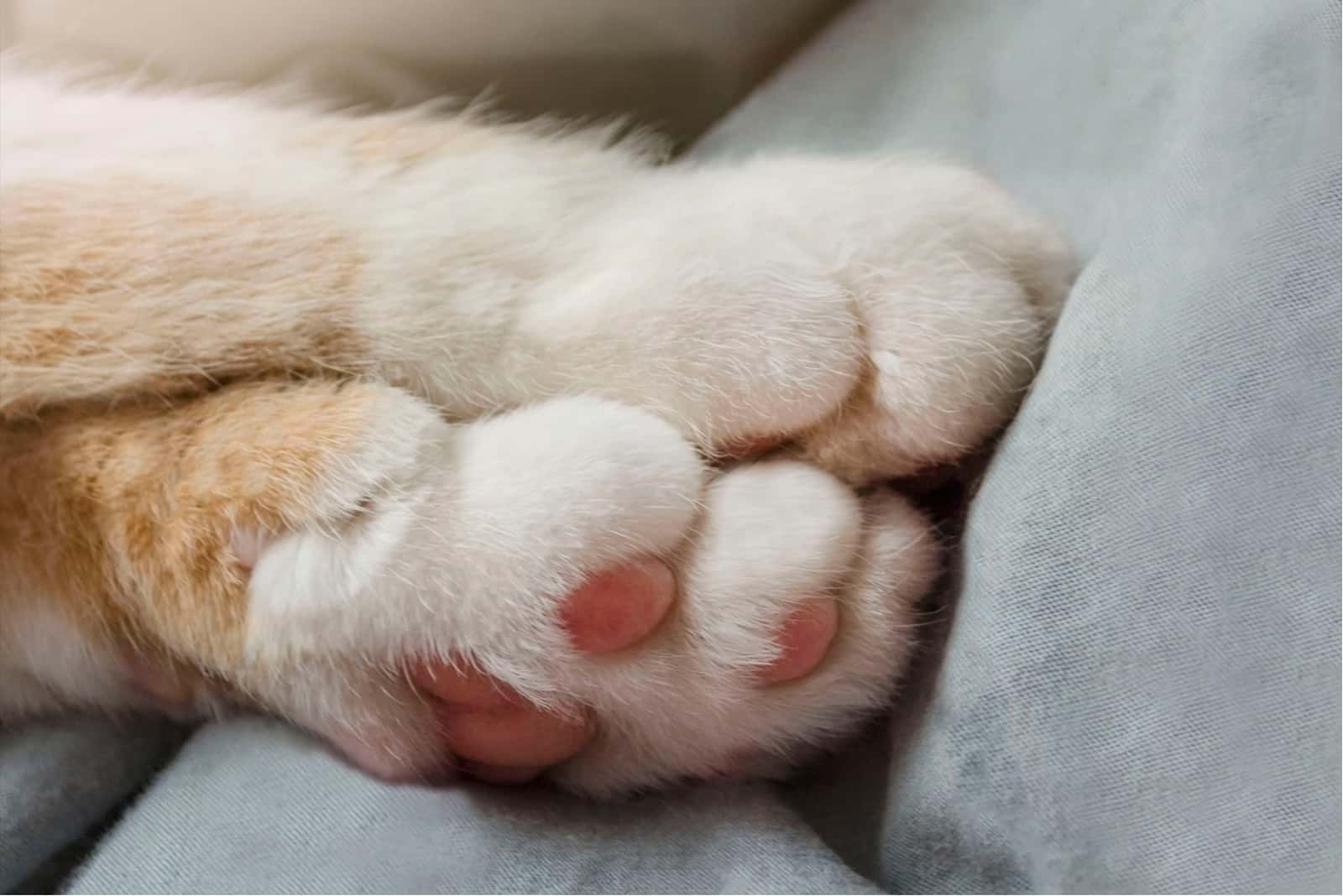
A cat’s claws are very important for its daily life and activities. They are used for self-defense, they provide grip and prevent them from slipping when walking, running, and jumping on different surfaces.
However, they are very sensitive and very easy to damage so paw problems can arise. One of the main issues is cat paw pad peeling.
Cat paw pad peeling may be caused by many things such as injury or trauma, poor nutrition, low protein levels, different medications (especially steroids), over-grooming, genetics, and even stress.
As these paw pads are so important for cats, your job as a pet parent is to take care of the cat’s paw health.
Protect your cat from injuring their paw pads, hydrate them well, and trim the cat’s nails often in order to avoid infections and other issues. Monitoring your cat’s paw health is the best way to avoid problems from progressing and causing discomfort or pain.
So, if you want a healthy and happy furry friend, prevent your kitty’s paw pads from peeling ever again!
Related Content:
Hard Growth On Cat Paw Pad – What Is It And How To Deal With It

